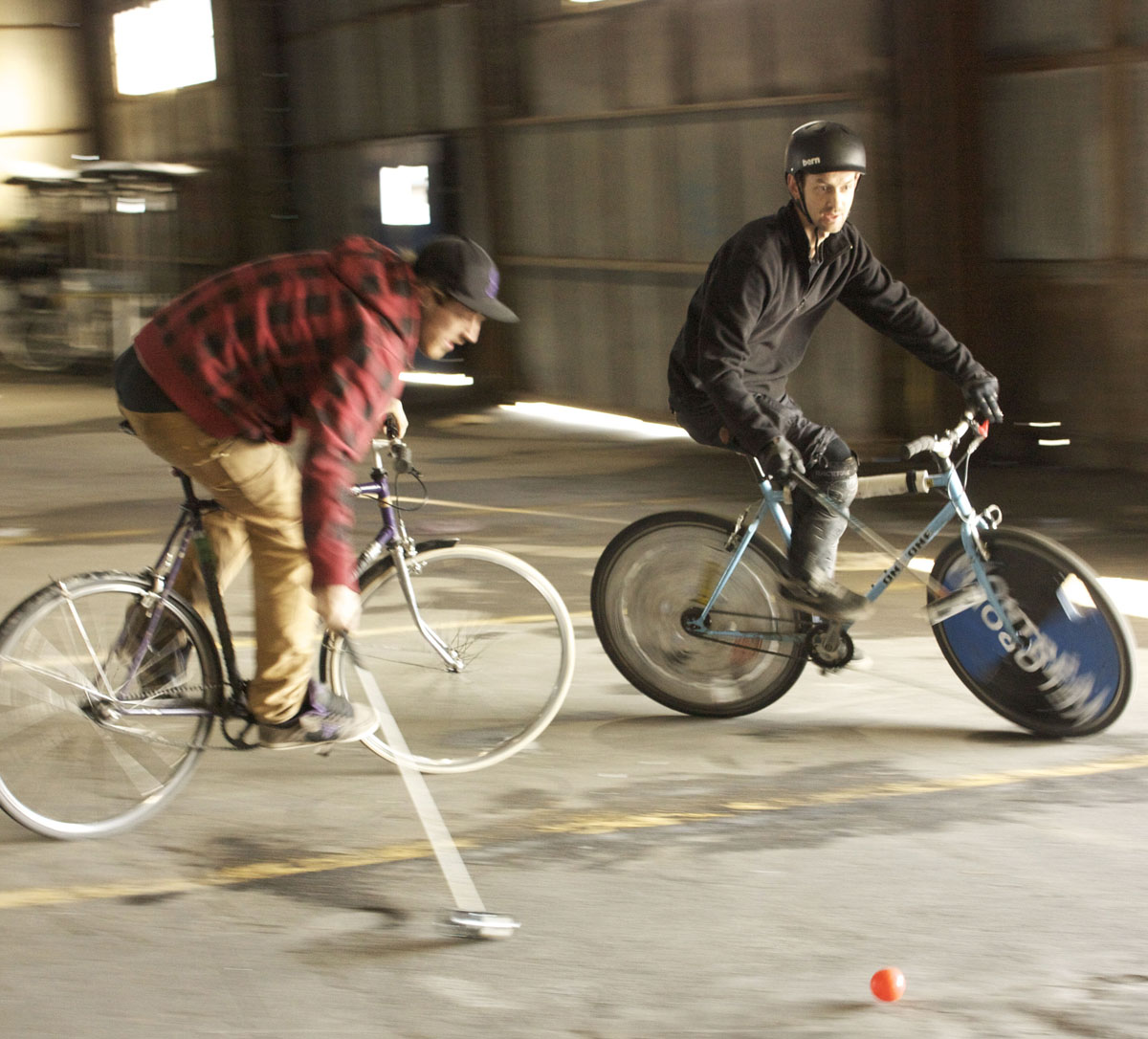When the safety bicycle, an ancestor to the model we use today, appeared on the North American and European cycling scene at the end of the 19th century, it created a craze and marked the beginning of the golden age of bicycles. Most members of the elite and middle classes used their bikes for transportation or recreational riding.
But Irishman Richard J. Mecredy had a different idea.

In 1891, he invented bike polo, and it has since made its way through Europe and North America.
The sport is now experiencing a re-birth after over a hundred years in existence.
Concordia student Alex Garcia, 27, has been part of its renaissance. Bike polo was introduced as a demonstration sport in the 1908 London Olympics, and the Irish won the gold over the Germans. A century later, bike polo is still being played throughout many cities, including Montreal.
Garcia already has a bachelor’s degree in applied human sciences and has come back to Concordia to do another bachelor’s in education. Garcia found out about this little-known sport because of a passion – cycling. Being a bicycle-enthusiast, he would often read up on cycling. He came across the sport while surfing the web, but he only really got hooked when he was riding back home from downtown one day and came across some people playing bike polo in a schoolyard. He automatically knew what it was, and as soon as he joined in, he caught bike polo fever.
Garcia started playing in September and his love for the sport has only increased since. He plays year-round with fellow enthusiasts who share his passion. They usually meet up on Sundays in schoolyards, no matter what the temperature is.
A bicycle, a homemade mallet and a street hockey ball are all you need to play this sport. Many players wear some protective equipment, even though it isn’t mandatory. The most popular are shin pads, hockey helmets, goggles, gloves, elbow pads and mountain bike upper body armours.
The rules of bike polo aren’t complicated. It can be played on hard-court or on grass. The usual size of the field of play is about the size of a basketball court. Each goal is made up of two cones a bike’s length apart.
A player’s foot is not allowed to touch the ground under any circumstance. If it does, that player must ride to midfield and touch the sideline. His or her team plays a man down until they make their way back. The game is played three-on-three, and usually lasts between 20 to 30 minutes. Body-checking is allowed, but intentional contact can only be made to its counterpart, i.e. body to body, bike to bike and mallet to mallet.
Garcia has been fairly lucky in terms of accidents to his bike and injuries. “Most things have not broken, although my wheels are getting slightly bent because you’re hitting them against other people and you’re also hitting it with your own mallet when you’re taking shots,” said Garcia. “In general, they’ve stayed fairly straight. I’ve seen brake levers snap in half when a bike flipped over and just landed badly. Once, on my old bike, a guy and I were chasing the ball and we met and he checked me. His pedal went into my front wheel and it ejected me off of my bike. It broke three spokes on the wheel. If I had to talk about repairs I’ve had to do since September, I’d say two or three flat tires.”
To people who have never heard of this sport, their biggest question is how players manage to stay balanced throughout a game. According to Garcia, players use many tricks to not fall: they turn their front wheel so that both wheels are not aligned, they use the mallet as a tripod and they even hold onto their opponents to stay on their bikes.
The mallets used in bike polo cannot be bought in most stores. In general, players will make their own using ski poles or golf club shafts and fastening a piece of pipe (typically ABS piping). But players can customize their mallets and get creative. “That’s part of appeal,” said Garcia. “You play a game and then you talk to the other guy about his mallet and you compare designs. This is part of the fun.”
If you want more information on the league, check out their Facebook page by searching “Montreal Bike Polo.”





Comments are closed.